| |
Medical for Physicians/Nurses |
| |
|
| |
ARUP Consult |
| |
It’s a laboratory test selection support tool |
| |
|
| |
Lab Tests |
| |
The Lab Tests available are: Blood Bank, Clinical Chemistry, Coagulation, Hematology, Serology, Immunology, Tumor Markers, Urinalysis and Therapeutic Drugs |
| |
|
| |
Lab Tests Online |
| |
A resource that can be accessed by mobile devices |
| |
|
| |
Normal Lab Values |
| |
A tool to help clinicians determine normal laboratory values |
| |
|
| |
Medical Lab Tests |
| |
Offers short and concise information including normal lab values of the most common clinical laboratory tests |
| |
|
| |
Capzule |
| |
An application for EMR access |
| |
|
| |
HeartIT |
| |
A medical imaging viewer |
| |
|
| |
Ziosoft zioTerm 2D/3D |
| |
A tool for viewing 2D/3D image files on your iPhone |
| |
|
| |
GE Clinical Images |
| |
Showcase clinical IMAGES from GE Healthcare imaging systems |
| |
|
| |
iRadiology |
| |
An app that allows for quick review of classic radiology cases during rounds or clinical rotations |
| |
|
| |
HeartScan for iPhone |
| |
An app to turn your iPhone into a convenient heart rate monitor |
| |
|
| |
Eponyms-touch |
| |
An eponym database |
| |
|
| |
Med Mnemonics |
| |
A unique learning tool with over 1400 mnemonics |
| |
|
| |
Medical Abbreviations |
| |
An app that contains over 14,000 abbreviation definitions |
| |
|
| |
AbbStore-Lite |
| |
An app with the complete resource for medical abbreviations, acronyms, and eponyms |
| |
|
| |
Quick Medical Terminology and Abbreviation Reference |
| |
The #1 selling medical terminology reference app on iTunes |
| |
|
| |
The Wheel |
| |
A gestational age calculator |
| |
|
| |
The Wheel SP |
| |
A tool to do fetal biometric calculations along with normal GA calculations |
| |
|
| |
The Wheel RE |
| |
Recreates the classic obstetric wheel gestational age (GA) calculator used by healthcare providers for decades |
| |
|
| |
Perfect OB Wheel |
| |
A simple and fast pregnancy wheel for clinicians |
| |
|
| |
Pocket Therapist |
| |
Provides quotes to help with problems |
| |
|
| |
Pocket Medical |
| |
Gives you medical terms and conditions |
| |
|
| |
WebMD Mobile |
| |
Provides symptom checker, drugs and treatment, and First Aid info |
| |
|
| |
Care Connector |
| |
Caregiver information on the go |
| |
|
| |
My Life Record |
| |
A place for storing personal information |
| |
|
| |
8h2o |
| |
A tool to track water consumption |
| |
|
| |
STD2006 |
| |
STD2006 contains the CDC STD Treatment Guidelines using their original, but difficult to navigate, table of contents |
| |
|
| |
Skyscape |
| |
Provides outlines in Clinical Medicine®, Archimedes™ – Medical Calculator, RxDrugs™: Drug Dosing Tool and MedAlert™ |
| |
|
| |
MedHelp |
| |
A disease tracking tool for healthcare workers and their patients |
| |
|
| |
pMDsoft |
| |
A tool to view data about your patients in realtime to aid charge capture |
| |
|
| |
iChart |
| |
A digital medical assistant to manage patient records |
| |
|
| |
Osirix 3.7.1 for MacOS |
| |
An image processing software dedicated to DICOM images produced by medical equipment |
| |
|
| |
OsiriX for iPhone 1.1.1 |
| |
OsiriX is a companion application to OsiriX for Mac which is an interactive visualization program designed for display and analysis of medical images |
| |
|
| |
Patient Tracker |
| |
An application from DoctorCalc that helps track your patients |
| |
|
| |
iBlurb |
| |
An application developed by one of our own, Dr. Paul Friedman |
| |
|
| |
Nature Mobile |
| |
The nature.com iPhone application allows you to access science news stories and the latest published research |
| |
|
| |
iStethoscope |
| |
An application that turns your iPhone into a stethoscope |
| |
|
| |
Swine Flu + Outbreaks Near Me |
| |
An application from HealthMaps that alerts you in realtime about disease outbreaks in your area |
| |
|
| |
Instant ECG |
| |
An application to view rhythm strips and 12-lead ECG movies |
| |
|
| |
HealthFusion® Mobile Apps (Contact Company for details) |
| |
HealthFusion® Mobile Apps deliver new tools that physicians need to treat patients, no matter where you are, and to help ensure that you are in constant communication with your practice. |
| |
|
| |
iPatientEd |
| |
A tool to teach patients about their specific diseases or health conditions |
| |
|
| |
Macpractice iPhone Interface 2.0 |
| |
A hospital rounds assistant and more |
| |
|
| |
Sad Scale |
| |
A tool to check depression, postpartum depression, geriatric depression, children depression scale and graph them |
| |
|
| |
Monthly Prescribing Reference |
| |
MPR provides concise prescription and OTC drug information, side effects and interactions for medical professionals |
| |
|
| |
Helsana-Eye Test |
| |
Hold you iPhone with arm stretched to test your eyesight |
| |
|
| |
Eye Chart Pro |
| |
An app to test eyes of patients using a iPad rather than an iPhone |
| |
|
| |
EyeXam |
| |
A tool to evaluate vision on the eye chart using the highest performance method. |
| |
|
| |
iNeedADoc |
| |
A tool to find the best doctor for your health condition |
| |
|
| |
Proloquo2Go |
| |
A tool for those who have speech difficulties |
| |
|
| |
Pocket reference for doctors (in development) |
| |
Read about brave University of Saskatchewan students going forward with a devlopment effort for doctors. |
| |
|
| |
Snoflake SNOMED CT Browser |
| |
A tool for viewing SNOMED CT information |
| |
|
| |
Sleep Apnea Test |
| |
This application gives an indication of whether the reader may have symptoms of sleep apnea |
| |
|
| |
iSore |
| |
A gruesome directory of medical conditions affecting the eyes, skin and mouth |
| |
|
| |
Harvard University Headline News |
| |
Get the latest news from Harvard on your iPhone |
| |
|
| |
NHS News |
| |
Keep up with the latest news from the UK’s National Health Service |
| |
|
| |
Medpage Today Mobile |
| |
This app puts breaking medical news and CME/CE credits at your fingertips, with daily coverage of over 30 specialties and annual coverage of over 60 meetings and symposia |
| |
|
| |
SearchMedica |
| |
An app that improves the practice of medicine by allowing practitioners to use the Internet to discover the most recent, relevant, and authoritative clinical information |
| |
|
| |
Medsy |
| |
A tool to help you with scheduling your medications |
| |
|
| |
eRoentgen Radiology Diagnosis |
| |
A tool to due radiology diagnosis |
| |
|
| |
ICD-9 and ICD-10 Helper |
| |
A tool to help with coding |
| |
|
| |
IQMax |
| |
A tool to gather the latest clinical and hospital information |
| |
|
| |
iMobileHealthCare |
| |
iMobileHealthCare has developed iAorticValve, a reference guide to all heart valve products. |
| |
|
| |
CobbMeter |
| |
A medical tool designed to measure the Cobb angle, the kyphosis angle, and the sacral slope on vertical spine radiographs |
| |
|
| |
Ethicon-PVP for iPhone |
| |
This app is a course about umbilical hernia repair using a partially absorbable mesh patch |
| |
|
| |
iTriage Health Network |
| |
A tool that provides self-diagnosis/triage and hosp/clinic/doctor finder all in one |
| |
|
| |
Meine Klinik |
| |
A German version of the iTriage Health Network |
| |
|
| |
Medicopedia |
| |
A database search tool in French |
| |
|
| |
VisualDx Mobile |
| |
An app that shows disease variation with MULTIPLE images of each disease |
| |
|
| |
Instant ECG |
| |
Electrocardiogram App that works on the iPhone |
| |
|
| |
EPI Life |
| |
A revolutionary mobile phone device that has an integrated multi-lead ECG and Health Suite fubction |
| |
|
| |
Medical Calculator |
| |
Another application from DoctorCalc that helps with calculations |
| |
|
| |
ABG for iPhone |
| |
ABG is a multipurpose medical calculator used to analyse arterial blood gasses and perform other functions |
| |
|
| |
ACC Pocket Guidelines |
| |
A clinical practice support tool set from the ACC that provides concise, portable reference tools about cardiology |
| |
|
| |
Corticonverter |
| |
A quick and easy-to-use utility application to perform corticosteroids unit convert |
| |
|
| |
Calculate (Medical Calculator) by QxMD |
| |
A next-generation clinical calculator and decision support tool |
| |
|
| |
DizzyFix by Clearwater Clinical (for Vertigo) |
| |
This tool instantly enables any physician to take a patient through the correct treatment maneuver for BPPV |
| |
|
| |
MyMoodMonitor (mym3) |
| |
An app that allows you to screen for potential depression and anxiety symptoms (including bipolar disorder and ptsd) in one easy review |
| |
|
| (N) |
T2 Mood Tracker |
| |
|
| |
T2 Mood Tracker is a mobile application that allows users to self-monitor, track and reference their emotional experience over a period of days, weeks and months using a visual analog rating scale. |
| |
|
| |
5-Minute Clinical Consult |
| |
An app to do quick consults |
| |
|
| |
|
| |
The most complete, evidence-based drug information resource, right at your fingertips |
| |
|
| |
Drug Addiction |
| |
A tool to monitor and identify drug addictions |
| |
|
| |
Drug Infusion |
| |
A calculator for IV Med Drip Rate infusions |
| |
|
| |
Grays Anatomy |
| |
A well known anatomical book by Henry Gray was first published in 1858 and is now in a mobile format for users |
| |
|
| |
iBP Blood Pressure |
| |
A blood pressure tracking and analysis tool |
| |
|
| |
ICU Pearls |
| |
An app that provides over 1,000 pearls of wisdom |
| |
|
| |
Medical 360 |
| |
An app for hard to find medical information |
| |
|
| |
Quick Medical Terminology |
| |
A tool recommended by the Medical Group Management Association (MGMA) for referencing purposes |
| |
|
| |
Medicine On Call |
| |
Presents treatment and laboratory tests orders for all diseases and disorders that are likely to be encountered in the hospital |
| |
|
| |
Nursing Central |
| |
The complete mobile solution for nursing |
| |
|
| |
NCLEX-RN Wiz |
| |
NCLEX-RN Wiz is the Number One Review app for NCLEX-RN review and nursing school course review |
| |
|
| |
RNotes |
| |
Helps nurses provide premium patient care by putting the latest quick-reference, clinically-focused nursing information at their fingertips |
| |
|
| |
Informed RN Pocket |
| |
A good reference for nurses who need quick information |
| |
|
| |
PatientKeeper® Mobile Clinical Results™ |
| |
Mobile Clinical Results is the mobile companion product to the PatientKeeper Physician Portal |
| |
|
| |
Paramedic Protocol Provider |
| |
An app that provides quick offline access to over 170 field treatment protocols |
| |
|
| |
Pedi STAT |
| |
A tool to achieve rapid pediatric reference information during emergency or critical care environments |
| |
|
| |
Psychiatry i-pocketcards |
| |
The i-pocketcards cover a wide range of tests and scales used for the psychiatric assessment of a patient |
| |
|
| |
Psychology Encyclopedia |
| |
A good reference for students and beginners in the study of Psychology |
| |
|
| |
Pubmed On Tap |
| |
A search tool for mobile referencing of the PubMed website |
| |
|
| |
Skyscape Medical Resources |
| |
An app about medical information and decision support resources for healthcare professionals, including physicians, nurses, physician assistants, nurse practitioners, medical students, nursing students, and more |
| |
|
| |
Student BMJ |
| |
A monthly international medical journal for medical students and junior doctors |
| |
|
| |
Taber’s Medical Dictionary |
| |
A medical dictionary that is very popular with current users of the application |
| |
|
| |
Pri-med Mobile |
| |
A professional community of peers and expert faculty delivering world-class content through a network of meetings, multimedia content, and online tools. |
| |
|
| |
MedAnywhere© |
| |
MedAnywhere© is an iPhone App and optional full line of Bluetooth® systems that enable a customer to have constant and comprehensive medical care capability in an emergency |
| |
|
| |
Smile Reminder |
| |
An application to enhance your practice by engaging your patients in the care process |
| |
|
| (N) |
Pri-Med Mobile – powered-by QuantiaMD |
| |
|
| |
Pri-Med offers healthcare providers a professional community of peers and expert faculty delivering world-class content through a network of meetings, multimedia content, and online tools |
| |
|
| (N) |
pMDsoft Charge Capture |
| |
|
| |
An app to improve the efficiency of your office through better charge capture |
| |
|
| (N) |
Top Doc |
| |
|
| |
Experience and react to realistic patient encounters that require quick clinical responses, just like a real medical clinic, with Top Doc, a new medical quiz App from Elsevier and Legacy Interactive |
| |
|
| (N) |
Procedures Consult |
| |
|
| |
Procedures Consult is an online multimedia tool that offers clear details on dozens of medical procedures |
| |
|
| (N) |
MedAptus |
| |
|
| |
Enterprises that have deployed MedAptus solutions have realized millions of dollars in increased revenue, improved organizational productivity, and enjoyed enthusiastic user adoption |
| |
|
| (N) |
Surg-i-Scan |
| |
|
| |
Surg-i-Scan™, from ImageXpres Corporation, is a surgical safety checklist application that conforms to the World Health Organization initiative to have surgical protocol check lists available for use by surgeons and nurses during surgical operations, and other invasive procedures, in an effort to reduce incidents of death, and reduce surgical complications by more than a third. |
| |
|
| (N) |
VisualDx Mobile |
| |
|
| |
This new medical app combines physician-reviewed clinical information with thousands of medical images from renowned physician and institutional collections. The only medical application to represent the variation of disease presentation through age, stage, and skin type, VisualDx Mobile addresses the key complexities faced by many clinicians today when diagnosing dermatologic and other visual conditions. |
| |
|
| (N) |
mSleepTest |
| |
|
| |
Snoring is not a joke and it could be a sign of a much more serious disorder |
| |
|
| (N) |
CTCAE v4.0 (from The Children’s Hospital of Philadelphia) |
| |
|
| |
The National Cancer Institute (NCI) Common Terminology Criteria for Adverse Events (CTCAE) is a standardized system to quantify or grade the severity of adverse events (AE) that occur with drug treatment or from medical devices. A definition of mild (grade 1), moderate (2), severe (3), life-threatening (4) and death related to AE (5) events is provided for each AE term. |
| |
|
| (N) |
InovaER (from Inova Health System) |
| |
|
| |
An app to get real-time updates on Inova Health System’s nine emergency room locations throughout Northern Virginia |
| |
http://itunes.apple.com/us/app/inovaer/id384637516?mt=8 |
| |
|
| (N) |
UroApp |
| |
|
| |
UroApp is a mobile app that connects to a social network for Urologists in Canada |
| |
|
| (N) |
OfficeEMR Mobile™ |
| |
|
| |
OfficeEMR Mobile™ is a Free add-on to iSALUS’s web-based electronic medical record and practice management service |
| |
|
| (N) |
Evolving Health |
| |
|
| |
This dialysis capacity planning tool enables you to quickly estimate the savings that could be generated by changing your mix of dialysis patients |
| |
|
| (N) |
MS Patient Resources |
| |
|
| |
MS Patient Resources makes an office visit what it should be—a two-way conversation between you and your patient |
| |
|
| (N) |
ZirMed Patient Check-in (for iPad only) |
| |
|
| |
Give your medical practice a modern feel while at the same time saving paper and eliminating the constant issue of illegible handwriting |
| |
|
| (N) |
ResolutionMD Mobile |
| |
|
| |
ResolutionMD Mobile is the only product that delivers anytime, anywhere full-functionality advanced visualization of medical images to your mobile device |
| |
|
| (N) |
MacPractice iPad VNC Interface |
| |
|
| |
Use an iPad as a portable, wireless, touch-screen monitor and use MacPractice on it |
| |
|
| (N) |
iClarity Lite (for iPhone & iPad) |
| |
|
| |
A medical image viewing app that enables viewing images stored on ClarityPACS, or using iClarity Gateway, to receive and view images from an existing PACS |
| |
|
| (N) |
HD Radiology (for iPad) |
| |
|
| |
One of many iPad apps from MedicMaKe to educate you about Radiology and other modalities |
| |
|
| (N) |
modalityBODY (for iPad) |
| |
|
| |
Use modalityBODY to organize, annotate, search and store thousands of medical images and create custom image collections for study and reference |
| |
|
| (N) |
AirStrip Cardiology™ |
| |
|
| |
A platform designed with a vision of securely sending critical patient information directly from hospital monitoring systems, bedside devices, and electronic health records to a clinician’s mobile device |
| |
|
| (N) |
The Johns Hopkins POC-IT® ABX Guide |
| |
|
| |
The Johns Hopkins ABX Guide is a point-of-care resource that covers everything you need to know about treatment of infectious diseases |
| |
|
| (N) |
PhotoClinic Mobile |
| |
|
| |
PhotoClinic Mobile helps primary care physicians diagnose and treat conditions. Search images and case studies of conditions submitted by office-based physicians and published in Consultant. |
| |
|
| (N) |
Nimble from ClearPractice (for iPAD only) |
| |
|
| |
A comprehensive EMR built specifically for the iPad |
| |
|
| (N) |
Med-Surg: Gastrointestinal & Genitourinary |
| |
|
| |
Familiarize yourself with questions encompassing common scenarios, health problems, and case studies that you will encounter as a nursing student with Med-Surg: Gastrointestinal & Genitourinary by HESI QuizMe |
| |
|
| (N) |
Bedside |
| |
|
| |
Bedside enables the clinician to take the Electronic Patient Record to the patient in a hospital bed, out in a community setting or at the patient’s home |
| |
|
| (N) |
iVCL |
| |
|
| |
An app that’s a c-arm simulator and anatomical viewer designed to teach all medical staff and students hand-to-eye co-ordination skills and anatomical positioning concepts in a radiation free environment |
| |
|
| |
Groups of Apps |
| |
|
| |
iPhoneness |
| |
Group of applications for pregnant mothers that include Woman Calendar, Foods to Avoid When Pregnant, Contraction Master, and others |
| |
|
| |
12 EMRs for iPhone |
| |
A collection of a dozen EMRs for your iPhone including Epic’s Haiku and others |
| |
|
| |
Unbound Medline |
| |
One of a group of medical applications for the iPhone from Unbound Medicine |
| |
|
| |
Medzio Mobile Health Network |
| |
Medzio is a free iPhone application that connects consumers to a variety of healthcare services |
| |
|
| |
Lexi-COMPLETE |
| |
An application that provides access to 20 databases |
| |
|
| (N) |
Apps for All – Healthful Apps |
| |
|
| |
Healthful Apps takes the legwork out of finding the best health-related apps, saving you time and money so you can focus on getting or giving quality healthcare. For example, the Mood Lifters allows you to quickly identify, based on peer reviews, the best apps in this category |
| |
|
| |
Apps for Patients |
| |
|
| |
Pharmacy |
| |
|
| |
Epocrates Essentials |
| |
An Rx information source. See below for information on the next version to be released later this year. |
| |
|
| |
iPharmacy |
| |
A Pharmacy Locator application |
| |
|
| |
The Merck Manuals for iPhone |
| |
The app provides quick and easy access to the Home Edition’s comprehensive and understandable medical information |
| |
|
| |
Medscape Mobile |
| |
A drug search and interaction checker application |
| |
|
| |
Remedy Systems |
| |
A free e-prescribing application certified for prescription routing through the SureScripts network |
| |
|
| |
RXnt |
| |
An e-prescribing application for physicians |
| |
|
| |
Pharmacist’s Letter® |
| |
A popular daily reference tool for pharmacists |
| |
|
| |
Psych Drugs |
| |
A tool to learn important and useful information about various psychotropic medications |
| |
|
| |
NREMT Paramedic Medications |
| |
An app with a comprehensive list and overview of the drugs used by paramedics |
| |
|
| |
Diabetes |
| |
|
| |
Islet |
| |
A mobile Diabetes management application |
| |
|
| |
GC Pro™ (formerly Glucose-Charter) |
| |
A tool to track blood glucose, insulin and other medications |
| |
|
| (N) |
Vree™ for Diabetes |
| |
Vree™ for Diabetes provides you with helpful tools in one easy-to-access location to manage your disease |
| |
|
| (N) |
BGluMon – Blood Glucose Monitor |
| |
|
| |
Blood Glucose Monitor is an advanced and easy-to-use tool to watch for your blood glucose concentration on a daily basis and included tools for recording, editing, exporting data, calculating and drawing statistics and reports |
| |
|
| (N) |
BGStar glucose monitoring and iBGStar Diabetes Manager |
| |
|
| |
iPhone and iPod touch users with diabetes will soon have an accessory and companion app that will help them monitor blood glucose levels from Sanofi-Aventis |
| |
|
| (N) |
NovoDose™ |
| |
|
| |
A mobile insulin analog dosing guide application for the iPhone and iPod Touch from Novo Nordisk |
| |
|
| |
Fitness |
| |
|
| |
Fitness Tracking |
| |
A tool for keeping up with your fitness routines |
| |
|
| |
I PHIT |
| |
A fitness tracking tool |
| |
|
| |
Steps |
| |
A pedometer for walkers |
| |
|
| |
iNewLeaf |
| |
Exercise and heart rate training information |
| |
|
| |
Heart Pal Free |
| |
An application for logging, charting, and analyzing your blood pressure and sharing it with your physician |
| |
|
| |
Heartwise Blood Pressure Tracker |
| |
The highest rated app for recording and keeping track of blood pressure readings |
| |
|
| |
The Human Body 2 |
| |
An app that details the human body for users |
| |
|
| |
Weight Watching |
| |
|
| |
WeightMan |
| |
Application for recording (managing) your weight everyday |
| |
|
| |
WeightBot |
| |
A tool to track history of your weight |
| |
|
| |
Lose-it! |
| |
A weight loss application to help you set goals and control calorie intake |
| |
|
| |
Easy Weight Loss |
| |
An app to discover how to lose weight with these easy weight loss and diet tips |
| |
|
| |
Weight Loss Tracker |
| |
An app to help track weight loss goals that is popular with current users |
| |
|
| (N) |
myPlan – The Special K Challenge™ |
| |
|
| |
The Special K Challenge™ is a two week weight management program designed just for you – using a great variety of Special K® products. It’s a great way to kick start a better you! And now, it’s easier than ever to stay on track. |
| |
|
| |
Lose Weight With Andrew Johnson |
| |
This App is designed to help dissolve the bad habits associated with overeating, eating too fast, eating at the wrong times etc. |
| |
|
| (N) |
LIVESTRONG Calorie Tracker |
| |
|
| |
An app for helping you keep your calorie intake lower to reduce your weight |
| |
|
| |
Smoke Quitting |
| |
|
| |
Quitter 1.5 |
| |
An aid to promote the quitting of smoking |
| |
|
| |
I Quit Smoking |
| |
An aid to stop smoking |
| |
|
| (N) |
The EX Plan |
| |
|
| |
The EX Plan app is a whole new way to think about quitting smoking – as “re-learning life without cigarettes". This app lets people create their own personalized quit smoking plan and connect with other smokers online at BecomeAnEX.org |
| |
|
| |
CPR Aids |
| |
|
| |
Pocket First Aid & CPR |
| |
A tool for emergencies |
| |
|
| (N) |
PocketCPR |
| |
|
| |
PocketCPR for iPhone™ provides REAL-TIME feedback and instructions on CPR that empowers ANYONE to learn and practice CPR |
| |
|
| (N) |
CPR & Choking |
| |
|
| |
A tool to educate you in the art of giving CPR and also how to clear the paths of choking victims |
| |
|
| (N) |
Phone Aid |
| |
|
| |
An app to show you how to perform CPR to save a life |
| |
|
| |
Nutrition |
| |
|
| |
Restaurant Nutrition |
| |
A tool to check those carbs |
| |
|
| |
Food Additives |
| |
A tool to take control of what you eat |
| |
|
| |
Vitamins & Minerals |
| |
An app to learn about essential vitamins & minerals, what they do, & their food sources |
| |
|
| |
Relaxation |
| |
|
| |
Relax Completely |
| |
A fantastic hypnosis session for deep relaxation by one of the UKs leading hypnotherapists and trainers |
| |
|
| |
Relax Dream |
| |
An app that provides relaxing sounds |
| |
|
| |
Relax Ocean Waves |
| |
An app that provides relaxing sounds and beautiful videos |
| |
|
| |
Relax Raindrops |
| |
An app that provides the sound of raindrops to relax you |
| |
|
| |
Relax Waterfall |
| |
An app that provides relaxing sound from various environments such as whales, rain, thunder, waves, and more |
| |
|
| |
Relax with Andrew Johnson Lite |
| |
A popular relaxation tool that has been highly rated by others |
| |
|
| |
Stress Check |
| |
An app with powerful stress management tools to help you manage your stress more effectively |
| |
|
| |
General Health |
| |
|
| |
Health N Family |
| |
A health information tracker |
| |
|
| |
FDA for iPhone |
| |
US Food & Drug Administration information |
| |
|
| |
MyNetDiary |
| |
An online diet service |
| |
|
| |
Health and Fitness Mobile |
| |
A personal training aid |
| |
|
| |
Polka |
| |
A health & wellness tracking tool |
| |
|
| |
Infections |
| |
A tool to help avoid infections by highlighting typical signs of advancing infection |
| |
|
| |
HealthAssist |
| |
An application designed to help people who take prescription medications better manage their conditions |
| |
|
| |
Caregiver Apps |
| |
An app that helps to manage a caregiver’s day-to-day activities: track medications, illnesses, appointments or get expert advice |
| |
|
| |
My Epilepsy Diary |
| |
An app to keep track of seizures, medicines, and how you feel |
| |
|
| |
A Low GI Diet |
| |
An app to help monitor the foods you eat |
| |
|
| |
Amazing Human Calculator |
| |
An app that will help answer questions you have about your body |
| |
|
| |
BabyBump |
| |
A tool to track a pregnancy through to the delivery time |
| |
|
| |
Body Systems – Anatomy Quiz |
| |
A tool to educate you on your anatomy |
| |
|
| |
BP Tracker Lite |
| |
You can use this to easily log your BP, HR, medication and other useful information |
| |
|
| |
Brain and Nerves |
| |
An app to educate and inform about the brain and its nerves |
| |
|
| |
Am I Pregnant Quiz |
| |
A tool for determining if you are pregnant |
| |
|
| |
Labor and Contraction Timer |
| |
An app to easily time labor contractions |
| |
|
| |
Menstrual Calendar |
| |
A tool for calculation from FertilityFriend.com |
| |
|
| |
Expecting |
| |
A tool that can help you along the way to that special day – your due date and your child’s birthday |
| |
|
| (N) |
Pink Pad Pro (Period, Fertility & Health Tracker) |
| |
|
| |
An app that provides a central location for women to track pregnancies |
| |
|
| |
Learn Muscles |
| |
A good learning tool for understanding muscles |
| |
|
| |
Muscle System (Head and Neck) |
| |
A tool providing details of each muscle’s origin and insertion. It also include details of each muscle’s action and nerve supply |
| |
|
| |
Skeletal System (Head and Neck) |
| |
A tool to educate you on the subject of the skeletal system |
| |
|
| |
Muscle Trigger Points |
| |
A Reference for the most common trigger points and referral patterns for over 70 muscles |
| |
|
| |
Netter’s Musculoskeletal Flash Cards |
| |
Brush up on bony anatomy with this tool |
| |
|
| |
My Medical |
| |
An app to keep track of all of your personal medical information in one convenient place |
| |
|
| |
Physical Exam Essentials |
| |
An app that provides you with a quick overview of the essential aspects of the physical exam |
| |
|
| |
Sex-Facts |
| |
An app that contains hundreds of interesting, fun, and useful facts about sex |
| |
|
| |
Sexual Health Issues |
| |
An app to educate you about sexual intimacy, and how to achieve healthy relationships |
| |
|
| |
Speed Bones MD |
| |
A game to test your knowledge of the human structure |
| |
|
| |
Speed Brain |
| |
A game to test your base of knowledge about the human brain |
| |
|
| |
uHear |
| |
An app with high quality professional hearing tools in a mobile format |
| |
|
| |
Visualize Healing with Andrew Johnson |
| |
An application that is intended to help people through meditative visualization |
| |
|
| |
Women’s Health |
| |
An app developed by a fitness expert to help enhance women’s health |
| |
|
| (N) |
Dr K’s Breast Checker |
| |
|
| |
Breast cancer affects women of all ages, so being breast aware is very important to all women, including younger women |
| |
|
| (N) |
iBreastCheck |
| |
|
| |
This app will help women be breast aware and could make all the difference through early detection techniques |
| |
|
| |
TremorTracer |
| |
A tool to view symptoms that destroy nerve tissue such as Parkinson’s disease or multiple sclerosis |
| |
|
| |
Control of Communicable Diseases Manual |
| |
A tool to find out about communicable diseases |
| |
|
| |
Apps for Healthy Kids |
| |
An app to learn about First Lady Michelle Obama’s Let’s Move! campaign to end childhood obesity within a generation |
| |
|
| (N) |
KidsDoc |
| |
|
| |
Is your child sick? Whether you’re on the go or at home, this app will help you know what to do next |
| |
|
| |
MyHumana Mobile |
| |
A portable extension of Humana’s guidance promise |
| |
|
| (N) |
Coppertone MyUVAlert™ |
| |
|
| |
This handy iPhone application helps you with sun protection information for your whole family, offering local UV index forecasts, custom sunscreen reapplication reminders that you set, and individualized product recommendations |
| |
|
| (N) |
VideoMD |
| |
|
| |
Video MD features Free Health Videos and Doctor Videos that are created by physicians and are used to educate patients |
| |
|
| (N) |
Main Street Medica Mobile |
| |
|
| |
Use Main Street Medica Mobile to help better understand the cost implications of your choices, evaluate your options and determine which health care providers will best serve your needs |
| |
|
| (N) |
iChemoDiary |
| |
|
| |
The iChemoDiary is a personal oncology diary to record your chemotherapy schedule, treatments, medication and symptoms such as nausea and vomiting |
| |
|
| (N) |
iManage Migraine |
| |
|
| |
iManage Migraine provides a comprehensive suite of educational tools, real-time tracking, and analytic capabilities to enable you to better understand and manage your personal migraine experience |
| |
|
| (N) |
Sleep On It |
| |
|
| |
Get the iPhone alarm clock that does it all! Set your alarm and with one tap you can record how much sleep, then add info about sleep quality, your mood, meds and more to see what affects your sleep and how much you really need to feel rested and energized |
| |
|
| (N) |
CU-PetHealth |
| |
|
| |
CU Pet Health is a handy application brought to you by the College of Veterinary Medicine at Cornell University that allows you to manage information about your pets including biographic info, vaccines, medications and diet |
| |
|
| (N) |
East TN Kids |
| |
|
| |
East TN Kids is an application for the iPhone or iPod that will allow you as a parent, grandparent or caregiver to keep a record of important medical information on your child, read helpful pediatric health information and easily get in touch with your doctor or East Tennessee Children’s Hospital |
| |
|
| (N) |
Lets Move It |
| |
|
| |
An app from the Cleveland Clinic that makes it easy to move forward on your goal to wellness |
| |
|
| (N) |
iMapMyRIDE |
| |
|
| |
iMapMyRide makes cycling fun and easy, turning iPhone into a social cycling partner while tracking your speed, distance, route, and more using GPS |
| |
|
| (N) |
MMEx |
| |
|
| |
An Australian eHealth platform for recording your health information |
| |
|
| (N) |
AsthmaPulse |
| |
|
| |
An app to take control of your lung health using AsthmaPulse |
| |
|
| |
Development Tool |
| |
|
| |
Apple Developer for iPhone |
| |
An app to design, code, and build an iphone application |
| |
|
| |
Communication Tool |
| |
|
| |
ICE |
| |
An application for use in case of an emergency |
| |
|
| |
Care360 Mobile |
| |
Access medication history, lab results and more along with adding notes for follow-up |
| |
|
| (N) |
Care360 Mobile (for iPad) |
| |
|
| |
An app for use in clinical situations from Quest Diagnostics |
| |
|
| (N) |
Care360 Mobile (for iPhone) |
| |
|
| |
An app for use in mobile situations from Quest Diagnostics |
| |
|
| (N) |
Quest’s My Gazelle(TM) App |
| |
|
| |
Get Quest Diagnostics lab results anytime on your iPhone, store emergency information, share essential health and emergency info with local doctors, and manage medications |
| |
|
| |
AllOne Mobile |
| |
A tool to give you access to your HealthVault account |
| |
|
| |
iRefill |
| |
An application to refill prescriptions with your mobile device |
| |
|
| |
Allscripts Remote™ for iPhone |
| |
An application that enables providers to remotely control their Allscripts Enterprise or Professional EHR from any location |
| |
|
| |
motionPHR |
| |
A Personal Health Record (PHR) for mobile use |
| |
|
| |
Health Cloud |
| |
A native iPhone client for Google Health, and its PHR with a view of the PHR in the form of a Continuity of Care Record (CCR) |
| |
|
| |
myMediConnect |
| |
All of your medical records made available securely online, accessible anytime, anywhere as a PHR |
| |
|
| |
howsthepatient |
| |
An app to update family and friends about a hospital stay of a loved one |
| |
|
| |
Documents To Go |
| |
An all-in-one application with support for Microsoft® Word, Excel & PowerPoint, PDF, Apple iWork and other files |
| |
|
| |
Simplenote |
| |
An app with more features to replace the Notes app on your iPhone, iPod touch, or iPad |
| |
|
| |
Dragon Dictation for the iPhone |
| |
Dragon Dictation is an easy-to-use voice recognition application powered by Dragon® NaturallySpeaking® |
| |
|
| (N) |
Dragon Medical Mobile Search |
| |
|
| |
Dragon® Medical Mobile Search is the fast, accurate and smart way for busy, mobile physicians to search online content on their iPhone™ using their voice |
| |
|
| |
RightSignature |
| |
A tool that provides electronic signature capabilitiy |
| |
|
| |
Citrix Receiver for iPhone |
| |
Gives you the ability to run Windows apps on the iPhone using XenApp |
| |
|
| |
iResus |
| |
An app that provides up to date information to emergency department personnel |
| |
|
| |
Opera Mini & Opera Mobile browsers |
| |
An app that can provide speedier browsing of the Internet |
| |
|
| |
Health Plan Search |
| |
Search for health plans by Zip Code |
| |
|
| |
HMAA |
| |
This app will help you search for medical providers when you are in Hawaii |
| |
|
| |
mPassport Barcelona |
| |
An app to find trusted doctors, ready to see you when you are traveling |
| |
|
| |
Siri – Your Virtual Personal Assistant |
| |
Siri is a new way to get things done |
| |
|
| |
Emergency Radio |
| |
An app to inform on activity broadcast over police radios and emergency vehicles |
| |
|
| |
perfectserve |
| |
An app providing voice, online, and mobile solutions for hospitals and physician practices |
| |
|
| |
text4baby |
| |
A messaging service for pregnant women |
| |
|
| |
Pulse MobileMD |
| |
A workflow app for medical professionals |
| |
|
| |
Walgreens Mobile |
| |
Walgreens Mobile is an app for handling your daily prescription needs |
| |
|
| |
Jewish Hospital & St. Mary’s HealthCare iPhone |
| |
Jewish Hospital & St. Mary’s HealthCare is the first hospital in Louisville to develop a unique iPhone and Blackberry app to serve the needs of its patients |
| |
|
| (N) |
uCentral from Unbound Medicine |
| |
|
| |
uCentral is an institutional gateway to knowledge resources using PDAs, wireless devices, and the Web. It provides institutions with a powerful and flexible platform for delivering knowledge to the point of need and communicating with mobile users. |
| |
|
| (N) |
MD-IT iConnect |
| |
|
| |
MD-IT iConnect transforms your iPhone or iPod Touch into an easy-to-use wireless dictation device with secure upload functionality direct to the MD-IT Platform |
| |
|
| (N) |
Dr. Chrono Medical Practice Management |
| |
|
| |
Dr. Chrono has created the world’s first native iPad Electronic Health Record Platform available for free download in the iTunes App Store. The Dr. Chrono iPad EHR platform is paired with a hosted SaaS (Software as a Service) practice management backend that provides electronic medical billing and scheduling over the web |
| |
|
| (N) |
Jewish Hospital & St. Mary’s HealthCare App (for Patients) |
| |
|
| |
Jewish Hospital & St. Mary’s HealthCare has created a unique iPhone and Blackberry app to serve the needs of its patients |
| |
|
| (N) |
EMNet findER |
| |
|
| |
EMRNet findER locates the closest emergency room with one click using the most comprehensive national ER database |
| |
|
| (N) |
Amcom Mobile Connect |
| |
|
| |
The Mobile Connect application on your BlackBerry, iPhone, or Android separates critical messages from less important emails and SMS messages |
| |
|
| (N) |
DocNog California |
| |
|
| |
Finding a doctor or hospital is easy with DocNog California. With this simple and easy-to-use application, you can search for family doctors and specialists, hospitals, and urgent care facilities |
| |
|
| (N) |
Beth Israel Deaconess Find a Doctor |
| |
|
| |
With this Beth Israel Deaconess application you can search for affiliated doctors by name, specialty, or even by proximity to your location |
| |
|
| (N) |
MedWatcher (from Children’s Hospital Boston) |
| |
|
| |
Stay up to date with the latest news and government safety alerts for the prescription medicines you take. Submit any side effects you experience to the US Food and Drug Administration (FDA) to make drugs safer for everyone. |
| |
|
| (N) |
WhiteGlove Mobile |
| |
|
| |
WhiteGlove Mobile allows WhiteGlove House Call Health members to access their WhiteGlove account to schedule a visit, view their medical history, visit history and membership status – all from their iPhone or iPod Touch! |
| |
|
| (N) |
NortonMobile (from Norton Healthcare) |
| |
|
| |
The NortonMobile iPhone application gives you instant, real-time access to the largest network of physicians, hospitals, urgent care centers and specialty centers in Greater Louisville – all at the tap of a finger |
| |
|
| (N) |
Scott & White Mobile |
| |
|
| |
An app where you can search physicians and healthcare providers at any Smith & White location or emergency room location |
| |
|
| (N) |
Scribe Mobile |
| |
|
| |
Scribe’s iPhone dictation solution “Scribe Mobile” delivers the convenience of handheld dictation with the near real-time file transfer of telephone dictation |
| |
|
| (N) |
Doximity |
| |
|
| |
Doximity is a private network for verified physicians and medical professionals to connect, refer, and securely communicate |
| |
|
| (N) |
Find A Health Center |
| |
|
| |
A tool for mobile devices from Health Resources and Services Administration to help you find a health center in your area |
| |
|
| (N) |
St. Vincent’s Health System’s Dial-A-Nurse |
| |
|
| |
Dial-A-Nurse is a free community health information service to provide general health and medical information |
| |
|
| (N) |
uCentral from Unbound Medicine |
| |
|
| |
uCentral is an institutional gateway to knowledge resources using PDAs, wireless devices, and the Web. It provides institutions with a powerful and flexible platform for delivering knowledge to the point of need and communicating with mobile users. |
| |
|
| (N) |
MedPage Today Mobile |
| |
|
| |
MedPage Today Mobile puts breaking medical news and CME/CE credits at your fingertips, with daily coverage of over 30 specialties and annual coverage of over 60 meetings and symposia |
| |
|
| (N) |
mPassport Paris |
| |
|
| |
mPassport is your mobile, medical passport, a personal medical concierge that lets visitors to Paris get the timely, quality care they need |
| |
|
| |
Finance |
| |
|
| |
Yahoo! Finance for iPhone |
| |
A financial online tool |
| |
|
| |
Futures |
| |
|
| |
Lorenzo for the iPhone |
| |
iSoft has announced an iPhone app to be released for its Lorenzo software |
| |
|
| |
General |
| |
|
| |
This category is for useful applications that are not mobile specific: |
| |
|
| |
Yowza |
| |
An application to get coupons to save money on purchases |
| |
|
| |
DoubleCheckMD |
| |
A tool to check for Drug Interactions and Side Effects |
| |
|
| |
Laugh Out Loud for Health |
| |
A humorous app better suited for the iPad rather than the iPhone |
| |
|
| |
Pogo Stylus |
| |
A cool application to show your artistic side |
| |
|
| (N) |
Fire Up Your Sex Drive |
| |
|
| |
This application makes a kind of high frequency alpha wave to synchronize with your brain wave. It could stimulate your brain to adjust endocrine system and produce some male sex hormone. This is a very healthy way without any side effect, and you will not need the pills to destroy your body any more! |
| |
|
| (N) |
ZumoCast |
| |
|
| |
No more syncing music to your phone. ZumoCast streams your entire music collection to you with a familiar interface. It even supports your iTunes playlists. ZumoCast also turns your computers into a personal cloud, enabling you to access all of your files and media without having to upload. Now you have access to all your content with zero effort. |
| |
|
| (N) |
Glympse – Location Sharing Made Simple |
| |
|
| |
With this app you can share your location with anyone, in seconds |
| |
|
| (N) |
Tesla AmbiScience Apps |
| |
|
| |
Tesla’s Ambient Music Tracks to provide the most relaxing, gratifying listening experience available on an app for the iPhone and iPod Touch. |









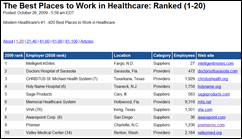








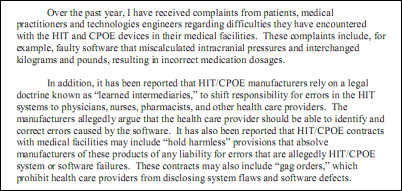






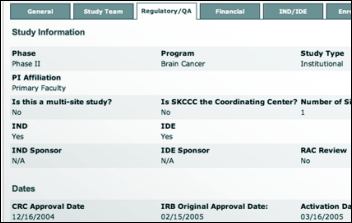













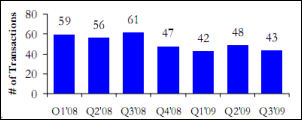

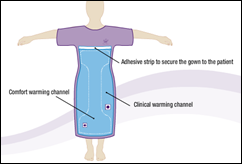
















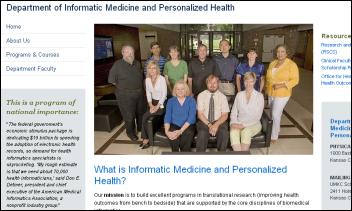


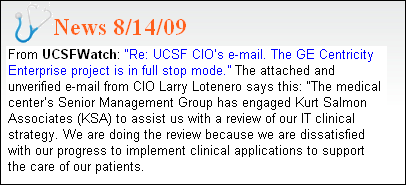









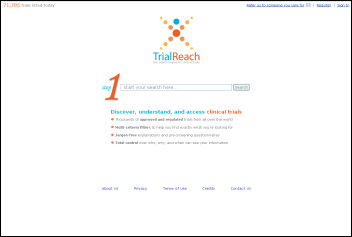


















RE NEJM piece: He shouldn’t future-conditional with “they can retreat, which might mean abdicating medicine’s broad public role, perhaps in…